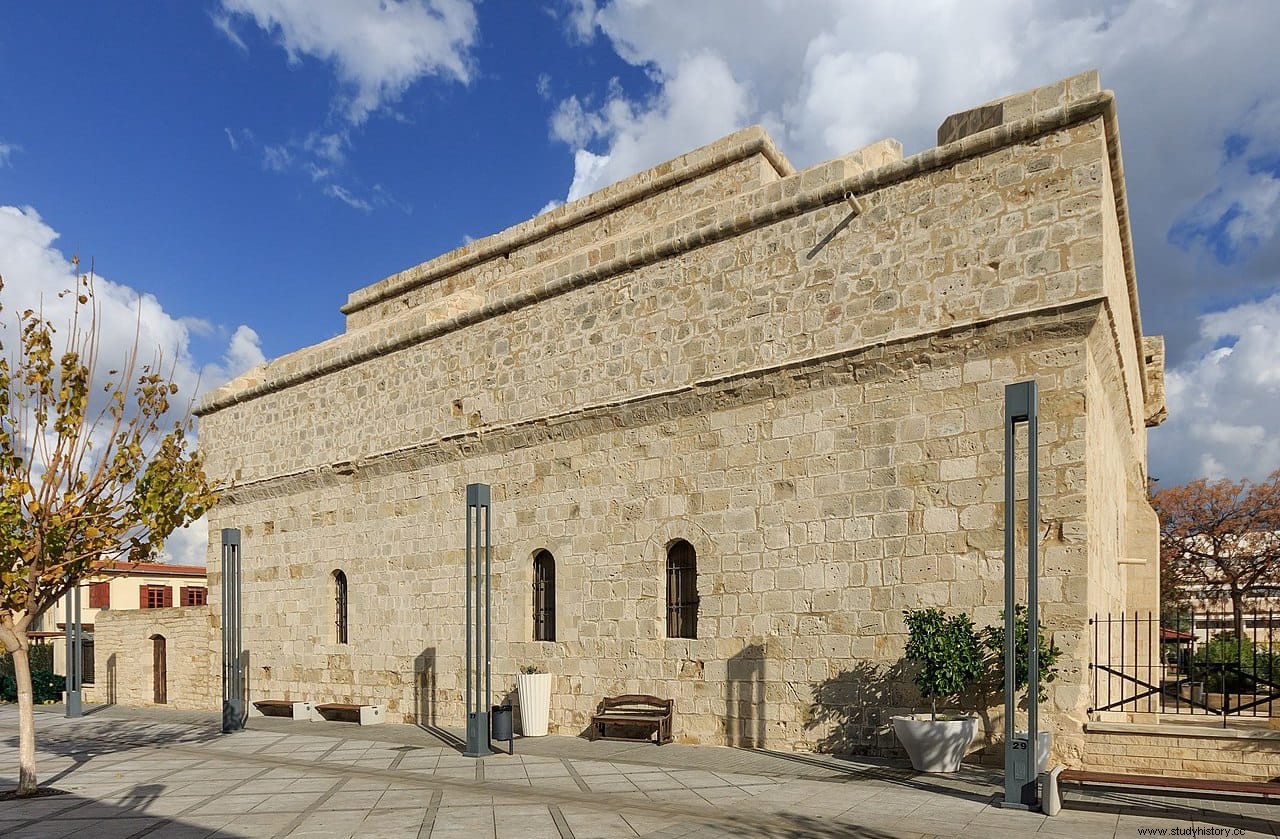Limassol is the second largest city in Cyprus after the capital Nicosia, and is located on the southern coast of the island. It was founded around the 5th century AD. with the name of Neapolis on an older settlement dating, according to some, to the 8th century B.C. and according to others from IV B.C.
Being located between two ancient and prosperous cities, Amatunte and Curio, it would not stand out too much during the first centuries of the Middle Ages, until a fortuitous historical event caused it to take on an unexpected role.
It would be in the year 1190, in the middle of the Third Crusade, when the King of England, Richard the Lionheart, sailed towards the Holy Land with a fleet of almost a hundred ships carrying his army of 17,000 men.

In the expedition, but on another ship, were his sister Juana, queen of Sicily, and his fiancee Berengaria of Navarre. She, who had been secretly promised to Ricardo, had joined them in the Sicilian city of Messina.
A storm caused the ships, which were bound for Acre, to seek refuge on the island of Cyprus. That of Juana and Berenguela did it in the port of Limassol, which at that time was still, like the rest of the island, under Byzantine rule.

The governor, Isaac Komnenos, invited both to disembark but they, fearing that he might catch them, refused the offer. As he did not want to provide them with fresh water either, once the storm passed they resumed their journey.
Another version says that Isaac kept the queens prisoner in Limassol. Ricardo, whom the storm had taken to another point of the island with his army, upon learning of him, went to the city and tried to convince Isaac to free them. But in the face of his refusal, he laid siege to the plaza. Isaac fled pursued by Ricardo, was defeated and captured, surrendering the entire island.
On May 12, 1191 Ricardo and Berengaria were married in Limassol, according to some sources in the chapel of Saint George, according to others in the basilica church (probably cathedral) on which the castle of Limassol was built two years later, which today houses the medieval city museum.
This castle was built in 1193 by Guido de Lusignan, who had been king consort of Jerusalem, and today you can still see the room where the wedding supposedly took place.

Ricardo would not maintain possession of the island for a long time, since his intention was to reach the Holy Land to reconquer Jerusalem, which had been taken by Saladin in 1187. So that same year 1191 he sold Cyprus to the Templars.
These were dedicated to raising taxes in order to recover the money invested, which caused a general revolt. The Cypriots appealed to Richard and he found a new buyer, Guido de Lusignan, who took the island and assumed the title of king.
According to other sources, Guido would have attended the wedding of Ricardo and Berengaria, and would even have participated alongside Ricardo in the war against Isaac Komnenos. In any case, after Ricardo left for the Holy Land, he ordered the construction of the aforementioned castle, whose current structure corresponds to the Ottoman reconstruction of 1590, although the original rooms remain inside. Guido died in 1194, but descendants of the Lusignans continued to rule Cyprus until 1474.

As for Berengaria, despite her becoming queen consort she would never get to know England. She first lived with Ricardo in San Juan de Acre while the crusade lasted and then they returned to Europe separately. While Ricardo fell prisoner to the Duke of Austria, she lived in Poitiers while helping to raise the ransom money.
After Richard's death at the siege of Chalus in 1199, Philip II Augustus granted him the lordship of Le Mans, where he lived until his death in 1230.
